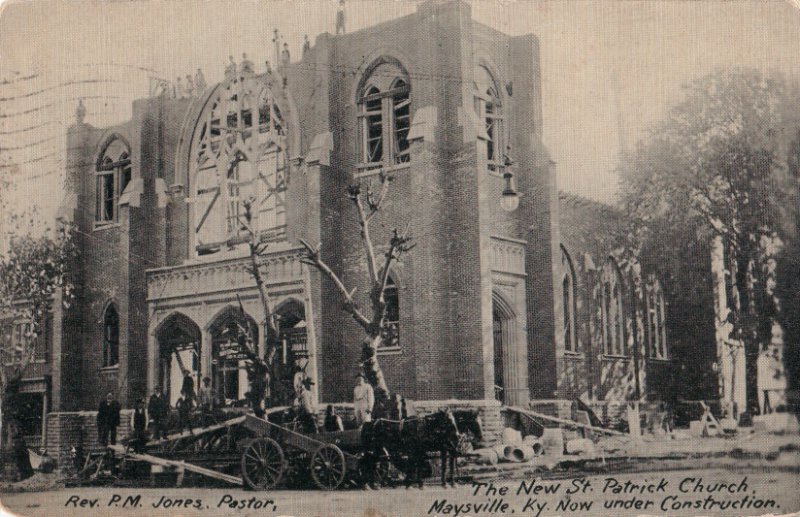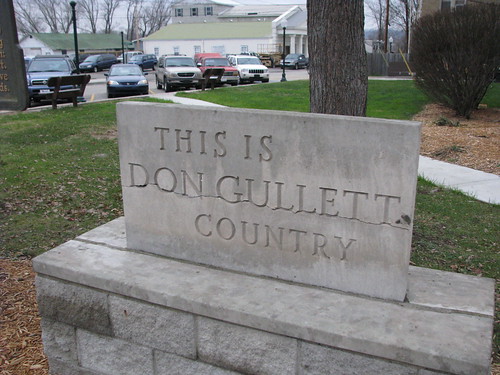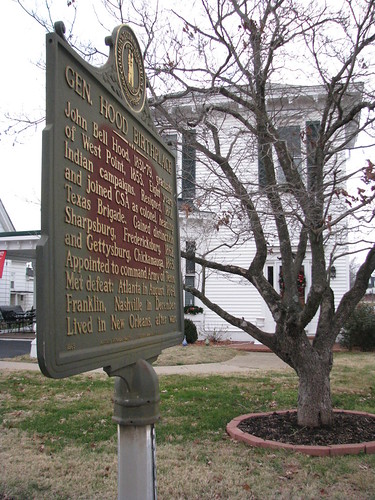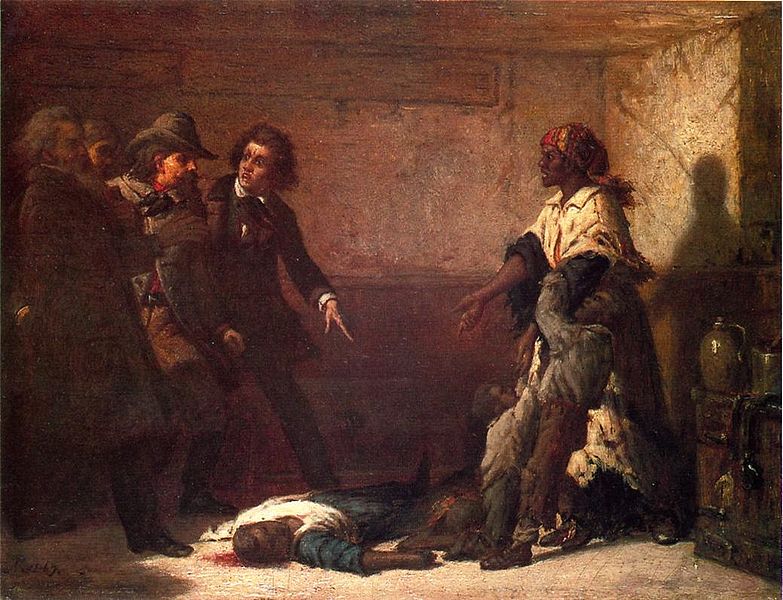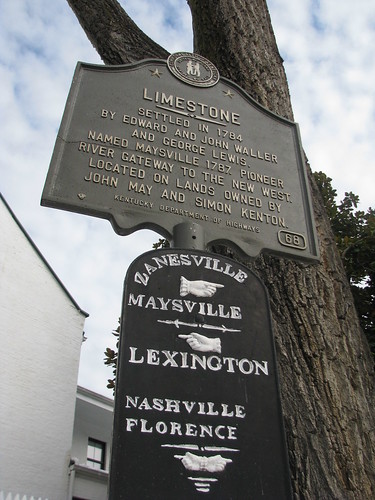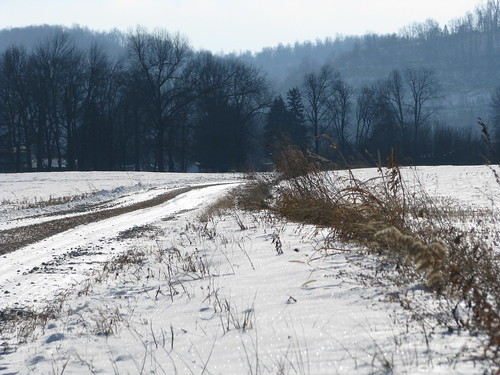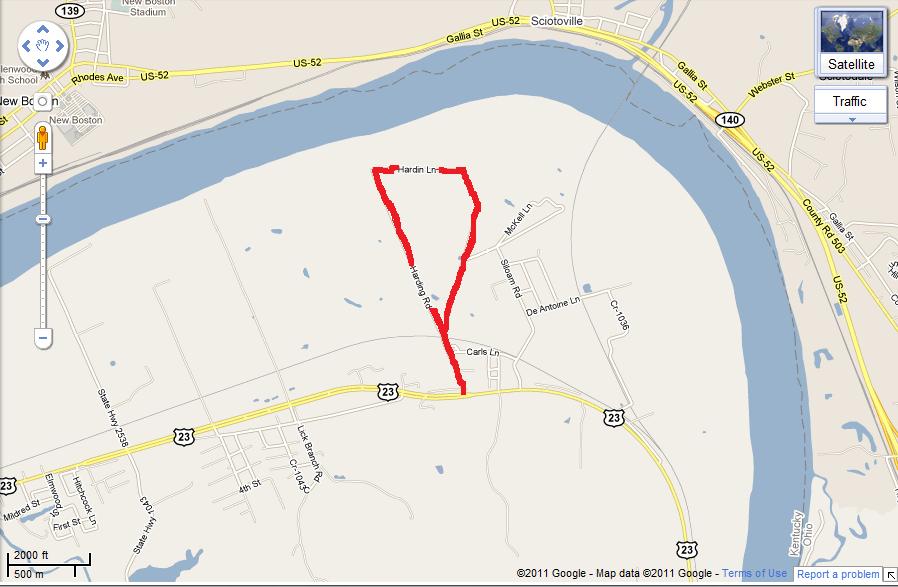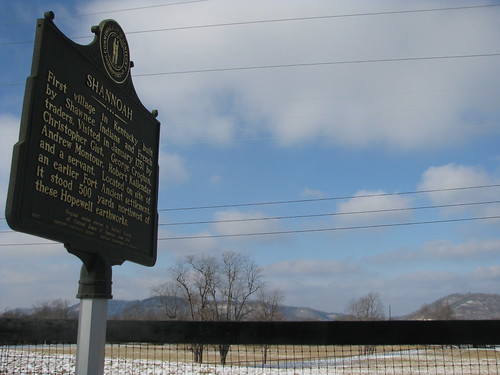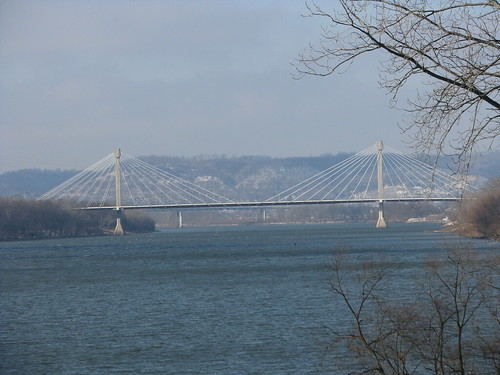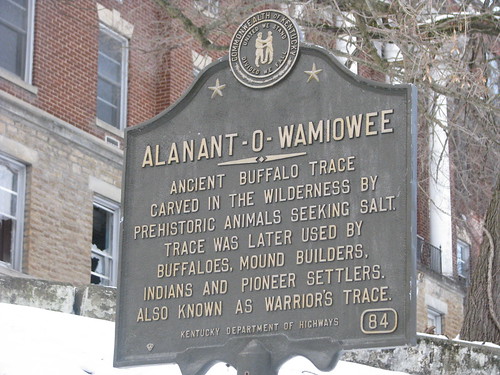 |
| Historic Marker #84; Maysville, Ky. |
Kentucky Historic Marker #84 states that
Ancient buffalo trace carved in the wilderness by prehistoric animals seeking salt. Trace was later used by buffaloes, mound builders, Indians and pioneer settlers. Also known as Warrior’s Trace.
There are a couple of conflicting reports regarding the path of this particular trace. The historic marker, as well as Filson’s 1784 map, identify this trace as the “Warrior’s Trace” which generally heads south from Limestone n/k/a Maysville southeast before cutting through the Cumberland Gap; this is likely correct. But there are other sources, including the Kentucky Encyclopedia, labeling the Alanant-O-Wamiowee as the which have it going through what is now Big Bone Lick and crossing the Kentucky River near Leestown. This buffalo trace is located near and lends its name to what is now the Buffalo Trace Distillery. A third trace nearly paralleled the first until it reached the Blue Licks to turn southwest toward Lexington.
Regardless of the course, these traces were wide swathes of land cut into forest and leaving permanent paths where the large bison (and their now-extinct sister-species) would migrate. The paths were later used by armies and settlers, and more recently as road beds.


